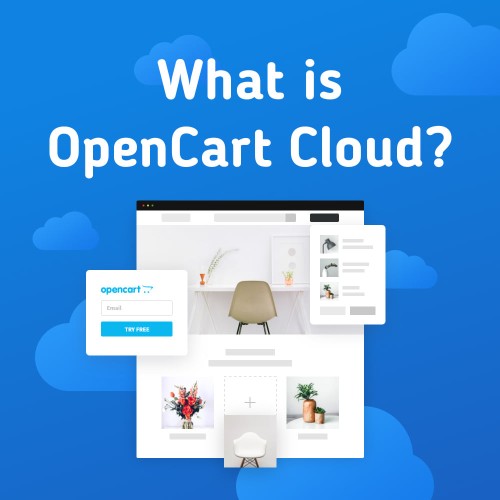As we kick off the new year, everybody is talking about emerging trends and changes in the ecommerce industry, and they’re offering you strategies to increase your sales and customer satisfaction.
But what’s the main factor behind excellent customer experience and overall business growth? Your team!
When they are happy and productive, everything else is running smoothly.
In this article, I’ll show you how to manage an ecommerce team and prepare yourself for a year filled with success and growth in all aspects.
How to manage an ecommerce team: 6 tips
When applied correctly, these six steps boost your productivity and reach your goals as a team.
They’re relevant for every ecommerce manager or business owner, whether you’re just starting to build your ecommerce brand or want to improve the dynamics of your existing team.
Define roles and responsibilities and hire the right people
The exact roles and the number of team members will depend on your company's size and budget.
However, even if you have limited resources and can hire only a few people, it’s essential to define the responsibilities of each role, making it easier for you to scale and hire new team members in the future.
Here are the key roles that should be part of an e-commerce team:
E-commerce manager
Digital marketing manager
Social media manager
PPC Specialist
SEO Specialist
Email marketing specialist
UX designers
Web developers
Copywriters
Customer support agents
Technical support specialists
Supply chain manager
Don’t worry if you can’t hire all of them right away. Many of these tasks can be outsourced to freelancers, especially in the beginning when you’re still growing your ecommerce business.
If you’re wondering what to look for when you’re hiring new employees for your ecommerce team, particular skill set may depend on their job title, but some of the universal things are making sure they have technical proficiency and understand how ecommerce platforms work, even though they may not have a lot of experience.
Look for creative people with an agile mindset who can quickly adapt to industry changes. Some roles require checking out their portfolios or doing thorough candidate testing and evaluation.
Use the right tools
According to one study, using the right collaboration tools can save your employees three to five hours weekly. Here’s a list of tools you’ll need to manage your ecommerce team effectively:
Project management tools, such as ClickUp, Notion, or Asana
Collaboration tools, such as Slack and Microsoft Teams
360 feedback tool or performance review software like Effy AI
Time-tracking tools, such as Clockify and Toggl
Ecommerce management tools, such as OpenCart, an all-in-one ecommerce platform
Workflow automation tools, such as Snov or Zapier
CRM, such as Salesforce or HubSpot CRM
Platforms for employee training, such as TalentLMS and LearnUpon
When choosing the tools, you should check in with your team members to see their preferences and assess their level of technical knowledge so you can find the tools that will be user-friendly for everyone on the team.
Set performance expectations and goals
You must set clear expectations and goals to improve productivity and track progress. Goals can give your employees motivation and a sense of purpose, so aligning their individual goals with your overall business objectives is essential.
Make sure that your goals are SMART: specific, measurable, achievable, relevant, and time-bound.
It’s crucial to identify relevant KPIs for each role, whether they’re focused on marketing or sales. Some of the most critical KPIs for ecommerce teams include:
Conversion rate
Customer acquisition cost (CAC)
Customer lifetime value (LTV)
Return on investment (ROI)
Website Traffic
Click-through rate (CTR)
Revenue by traffic source
Every team member must focus on metrics that are relevant to them (for example, your social media team should focus on getting more impressions and engagement on your posts; it’s not necessarily their job to drive sales) while also always having the bigger picture and your shared goals in mind. To boost engagement on your posts, create ads on social media that captivate your audience, fostering a deeper connection and aligning with the broader objectives of the team.
Finally, break down big goals into manageable targets for each employee so they can understand what they need to focus on and what their priorities are at the moment.
Provide training and coaching
Ecommerce is one of those constantly changing industries, and it’s challenging to stay competitive if you don’t keep up with trends.
Therefore, you should provide training and coaching regularly to onboard new employees and existing team members.
The training teaches your employees how to use new tools and technologies and allows them to put that knowledge into practice.
Conversely, coaching can help each team member identify their weak points and improve their technical and soft skills.
This can be done differently, depending on your budget and plans for the following year. You can:
Hire external trainers and consultants
Opt for online courses
Organize in-house workshops
Create peer learning groups
Document your processes
The best way to standardize your business procedures, boost performance, and speed up the learning curve is by thoroughly documenting all the processes in your company.
That way, you’re creating valuable resources and a knowledge base for your employees and ensuring consistent customer experience.
What’s the best way to document processes?
First, you should list all the tasks related to a particular role and then break them into smaller milestones. You can create step-by-step guides or video tutorials, but you don’t have to do it manually if you don’t have time.
Many business documentation tools, such as Scribe, Document360, etc., can automate this process.
Prioritize employee satisfaction
Happy and satisfied employees are more motivated to contribute, and their well-being reflects on the quality of the service they provide. So, to boost ecommerce customer experience, focus on employee satisfaction first.
According to recent research, some of the leading factors for job satisfaction are impactful work, opportunities for career advancement, fair compensation, and flexible work schedules.
What does this mean for you?
Your company culture should promote flexibility and encourage work-life balance. As a manager, you should lead by example and show your team members that rest is okay instead of going into burnout.
You should offer a comprehensive benefits package created to meet the needs of your employees and their families (PTO, health insurance, worker’s compensation, retirement plans, but also budgets for courses and professional development, childcare, or wellness programs).
Finally, one thing that doesn’t have to cost you anything but can mean a lot to your team members is recognizing and appreciating their hard work and celebrating milestones achieved.
The easiest way to implement this into your company culture is by implementing regular recognition systems that can be part of your performance reviews.
Conclusion
As you’re setting your ecommerce store for success in the new year, remember that the heart of outstanding customer experience and business growth lies within your team.
While you keep an eye on the industry trends from the outside, don’t forget to pay attention to the insights and suggestions of your team from the inside. After all, they’re in direct contact with your customers daily and know more about your business than any external business expert.
I’ve shared with you the best tips on team management that we use at our company, but feel free to customize them according to your company culture.




Login and write down your comment.
Login my OpenCart Account